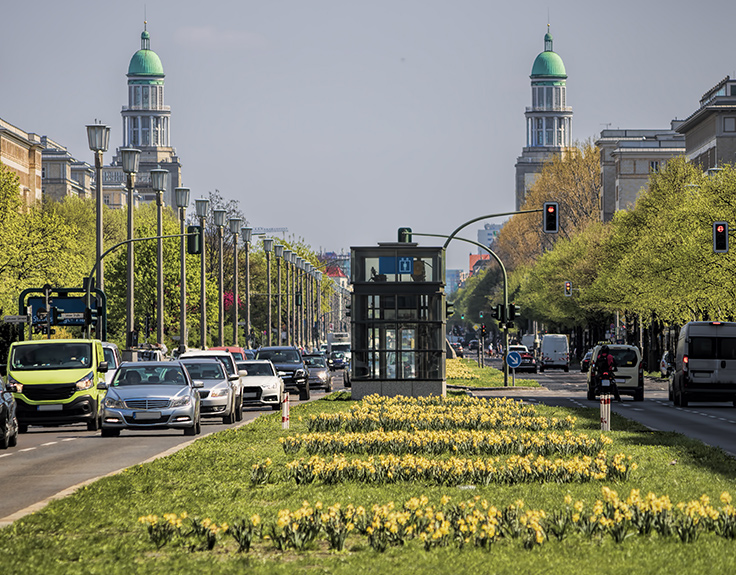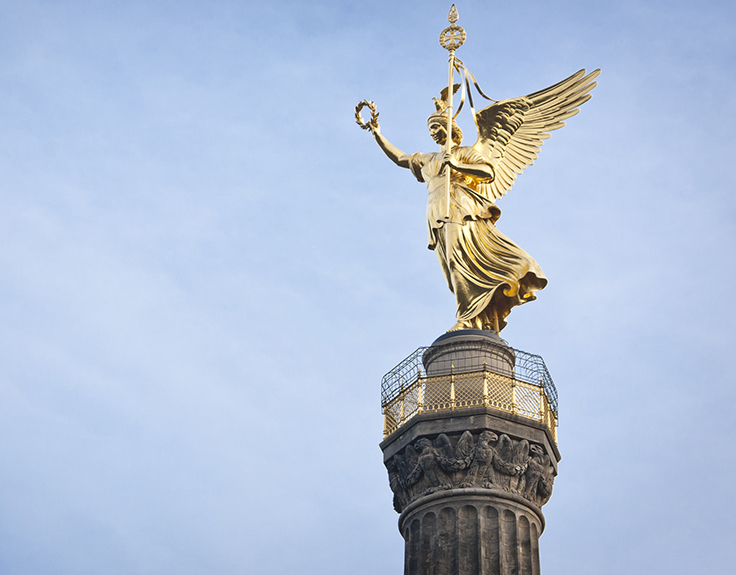Berlin’s most famous landmark
The Brandenburg Gate in Berlin was a symbol of divided Germany during the Cold War. Visitors would climb the observation platform to glimpse the world behind the Wall, separating East from West Germany physically and politically. It was at the Brandenburg Gate that U.S. President Ronald Regan gave his orders to “tear down this wall!”
Today the Brandenburg Gate in Berlin represents national peace and unity. It was opened to traffic in 1989 with 100,000 people turning out for the celebration.
The Quadriga statue
In 1793, the Brandenburg Gate in Berlin was adorned with the Quadriga statue, a sculpture representing the Goddess of Victory. When Napoleon’s army took Berlin in 1806, he had the Quadriga taken down and transported to Paris as a show of victory and power. It wasn’t until Napoleon’s abdication some 8 years later that the statue was returned to Berlin and once again put in its rightful place on the Brandenburg Gate.
The reopening of the Brandenburg Gate in Berlin
In December 1989, the Brandenburg Gate in Berlin was reopened as part of the reunification of East and West Germany. West German Chancellor Helmut Kohl walked through it to meet East German Prime Minister Hans Modrow. A key moment in history that will always be celebrated and remembered.
Other interesting facts about the Brandenburg Gate in Berlin
- When the Brandenburg Gate in Berlin was opened to traffic in 1989, the celebration caused severe damage to the monument, so it needed to be closed again for restoration.
- The Brandenburg Gate in Berlin is modelled on the Propylaeum of Athens’s Acropolis.
- There are five passages to the Brandenburg Gate. Historically the central one was reserved for royals, the adjacent were for use of the aristocracy and the remaining two were for ordinary citizens.






